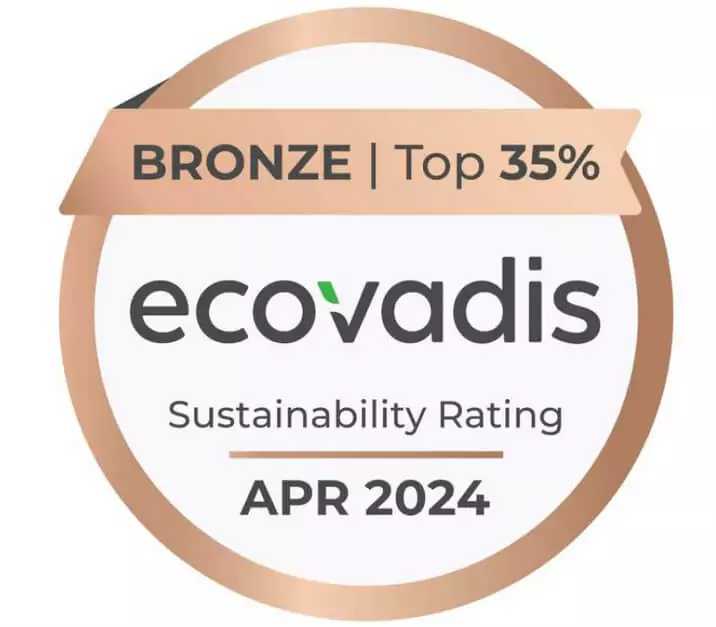Your Ultimate Guide to Shipping Lifepo4 Batteries Efficiently
In the rapidly expanding market for lithium iron phosphate (LiFePO4) batteries, efficient shipping processes are essential for meeting the growing demand. According to a report by ResearchAndMarkets, the global LiFePO4 battery market is projected to reach $6.6 billion by 2027, with a compound annual growth rate (CAGR) of 12.4%. As more industries, from renewable energy to electric vehicles, adopt these batteries for their superior safety and longevity, understanding the intricacies of shipping LiFePO4 batteries becomes paramount.
With specific regulatory requirements and specialized packaging considerations, a streamlined shipping strategy can not only reduce costs but also ensure compliance with international transport guidelines. This guide aims to provide you with the ultimate insights and best practices for shipping LiFePO4 batteries efficiently, helping businesses navigate this critical aspect of battery logistics while maximizing operational efficiency.
Benefits of LiFePO4 Batteries for Shipping Efficiency
LiFePO4 batteries, known for their impressive performance and safety features, have revolutionized the shipping industry. One of the key benefits of these batteries is their thermal stability, which reduces the risk of overheating during transportation. This characteristic enhances not only the safety of shipping but also makes it more efficient, as there are fewer regulations and precautions needed compared to other battery types. Consequently, logistics companies can streamline their operations and reduce costs associated with extra safety measures.
Moreover, LiFePO4 batteries boast a longer lifespan, which translates to fewer replacements and less waste over time. This longevity not only reduces shipping frequency but also provides a cost-effective solution for transport companies. As these batteries can withstand more charge-discharge cycles, they ensure that shipments remain powered for longer periods without the need for frequent refreshes. The reduced environmental impact resulting from less frequent replacements makes LiFePO4 batteries an attractive option in promoting sustainable shipping practices.
Your Ultimate Guide to Shipping Lifepo4 Batteries Efficiently
Understanding the Safety Advantages of LiFePO4 during Transport
Transporting LiFePO4 (Lithium Iron Phosphate) batteries comes with distinct safety advantages that make them increasingly popular in various applications, especially as global demand for energy storage solutions surges. LiFePO4 batteries have a stable chemistry that reduces the risk of thermal runaway—a significant safety concern for lithium-ion batteries. They also demonstrate a lower risk of fire, which has been pivotal in industries where transportation safety is paramount.
Recent advancements in battery technology have further enhanced the safety profile of LiFePO4 batteries during transit. Developing composite thick electrodes using chitosan and sodium carboxymethyl cellulose, researchers have achieved a high volumetric energy density, pushing the boundaries of traditional storage solutions while maintaining safety standards. According to industry reports, innovative logistics solutions, including railway transportation techniques, are being implemented to improve the delivery of lithium batteries more safely and efficiently, minimizing the risks associated with road transport. Effective safety strategies and rigorous testing standards are essential to promoting the safe transportation of batteries, as they play a crucial role in meeting the growing demands of electrification in our modern society.

Cost-Effectiveness: How LiFePO4 Batteries Lower Shipping Expenses
 When it comes to shipping LiFePO4 (Lithium Iron Phosphate) batteries, the cost-effectiveness of these power sources cannot be overstated. According to a report by the International Energy Agency, LiFePO4 batteries have a longer life cycle and lower degradation rates compared to traditional lithium-ion batteries. This longevity not only translates to fewer replacements but also reduces shipping frequencies, significantly cutting overall shipping expenses. Companies can save approximately 30% on logistics costs simply by choosing LiFePO4 over other battery types.
When it comes to shipping LiFePO4 (Lithium Iron Phosphate) batteries, the cost-effectiveness of these power sources cannot be overstated. According to a report by the International Energy Agency, LiFePO4 batteries have a longer life cycle and lower degradation rates compared to traditional lithium-ion batteries. This longevity not only translates to fewer replacements but also reduces shipping frequencies, significantly cutting overall shipping expenses. Companies can save approximately 30% on logistics costs simply by choosing LiFePO4 over other battery types.
Tip: When shipping LiFePO4 batteries, consider bulk shipping options. Consolidating orders can drastically lower shipping costs per unit, maximizing your savings.
Additionally, the safety profile of LiFePO4 batteries further contributes to cost-effectiveness. Because they are less prone to thermal runaway, they often incur lower insurance premiums during transit. A report from the Battery Safety Institute indicates that the incidence of shipping-related accidents with LiFePO4 batteries is 50% lower than with conventional lithium-ion batteries. This safety aspect not only reduces potential shipping costs but also minimizes delays.
Tip: Always ensure proper labeling and adhere to safety regulations to prevent additional charges associated with non-compliance during shipping.
Sustainability Benefits of Selecting LiFePO4 for Shipping Needs
When considering shipping options for batteries, the choice of LiFePO4 (Lithium Iron Phosphate) offers significant sustainability benefits.
LiFePO4 batteries have a longer lifespan compared to conventional lithium-ion batteries, requiring less frequent replacements.
According to a report from the International Renewable Energy Agency (IRENA), LiFePO4 batteries can last up to 5,000 cycles, significantly reducing the frequency of battery disposal and minimizing the environmental impact associated with battery waste.
This longevity not only promotes sustainability but also alleviates the demand for raw materials used in battery production.
Furthermore, the production of LiFePO4 batteries has a lower carbon footprint compared to their lithium-ion counterparts. A study by the Oak Ridge National Laboratory revealed that using LiFePO4 could result in a 42% reduction in greenhouse gas emissions during the production phase.
Additionally, the inherently safe chemistry of LiFePO4 batteries means they pose less risk of leakage or fire, further enhancing their appeal from an environmental standpoint.
As companies increasingly prioritize green practices, integrating LiFePO4 batteries into shipping processes aligns with sustainability goals, demonstrating a commitment to reducing environmental impact while meeting energy storage needs.
Comparative Analysis: LiFePO4 vs. Other Battery Types in Shipping
When it comes to shipping batteries, understanding the distinctions between
LiFePO4 (Lithium Iron Phosphate)
batteries and other types is crucial for efficiency and safety. LiFePO4 batteries are renowned for their stable chemistry,
which significantly reduces the risk of thermal runaway compared to traditional Lithium-ion batteries. This characteristic
makes them a safer option for transportation, allowing for less stringent regulatory requirements during shipping.
Additionally, the lower self-discharge rate of LiFePO4 batteries enhances their shelf life, making them a favorable choice
for long-distance shipping.
In contrast, other battery types, such as lithium-ion and lead-acid, present unique challenges in shipping. Lithium-ion
batteries, while popular for their high energy density, pose significant risks related to fire and explosion during transit.
Regulatory bodies impose strict shipping regulations on them, often necessitating
temperature-controlled conditions and special packaging to mitigate these risks. Meanwhile, lead-acid batteries, though
safer, can be cumbersome and less environmentally friendly because of their heavier weight and potential for leakage.
Thus, when considering shipping efficiency and safety, LiFePO4 batteries emerge as a clear frontrunner, solidifying their place
in the contemporary logistics landscape for battery transportation.




 When it comes to shipping LiFePO4 (Lithium Iron Phosphate) batteries, the cost-effectiveness of these power sources cannot be overstated. According to a report by the International Energy Agency, LiFePO4 batteries have a longer life cycle and lower degradation rates compared to traditional lithium-ion batteries. This longevity not only translates to fewer replacements but also reduces shipping frequencies, significantly cutting overall shipping expenses. Companies can save approximately 30% on logistics costs simply by choosing LiFePO4 over other battery types.
When it comes to shipping LiFePO4 (Lithium Iron Phosphate) batteries, the cost-effectiveness of these power sources cannot be overstated. According to a report by the International Energy Agency, LiFePO4 batteries have a longer life cycle and lower degradation rates compared to traditional lithium-ion batteries. This longevity not only translates to fewer replacements but also reduces shipping frequencies, significantly cutting overall shipping expenses. Companies can save approximately 30% on logistics costs simply by choosing LiFePO4 over other battery types.






